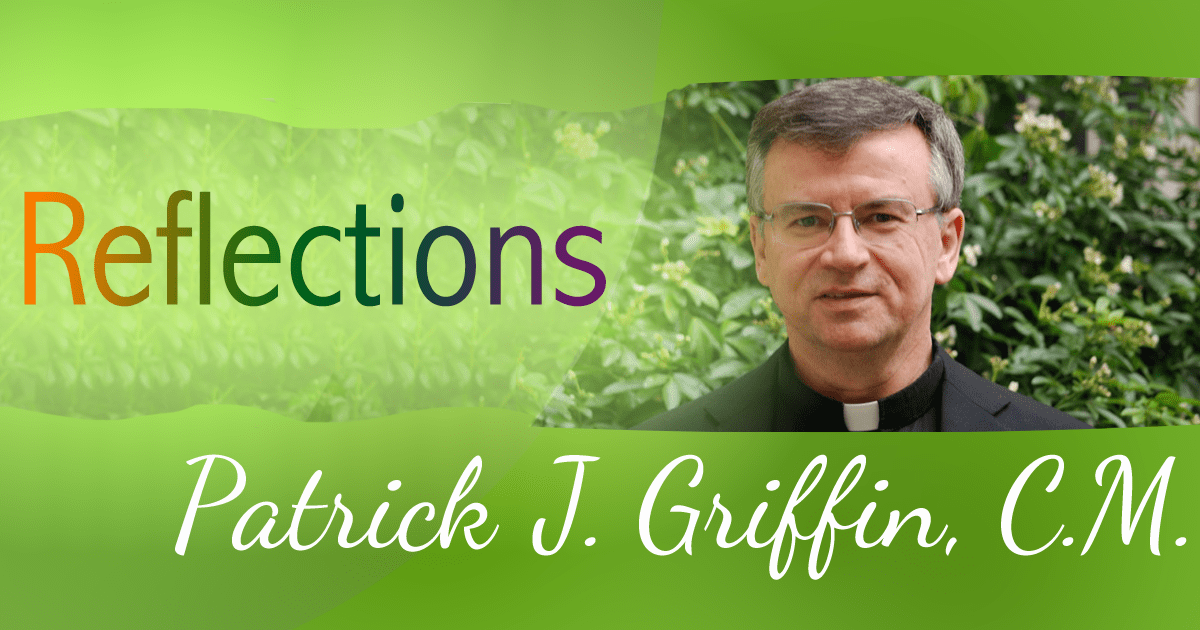In this academic year, St. John’s University, where I minister, celebrates its 150th anniversary. Founded in 1870 for the education of the children of immigrants, our school has a very Vincentian identity and mission. The University created a compelling video that emphasizes the jubilee (150th Anniversary video). It emphasizes light. From Jesus’ proclamation of himself as the “light of the world” (Jn 8:12) to his encouragement to his followers “you are the light of the world” (Mt 5:14-16), we see the power of light as it overcomes the forces of darkness. We warm to the symbol of light as it applies to education and an academic institution.
The seal of St. John’s depicts a burning lamp surrounded by the phrase (in Greek) “a burning and shining lamp” (Jn 5:35). Jesus described John the Baptist in this way. As we know, John courageously and forcefully witnessed to the truth no matter the consequences. He also illuminated the way to the Lord, pointing him out to his followers. A Catholic University could only rejoice in such a portrayal of its mission.
On the Queens campus of St. John’s, the D’Angelo Center sports a tower and in that tower (probably the highest point of the campus) sits a symbolized flame. A similar flame rests in the torch of the Statue of Liberty in New York harbor. From my primary schooling, I remember the poem by Emma Lazarus that describes that figure and that torch:
“Give me your tired, your poor,
Your huddled masses yearning to breathe free,
The wretched refuse of your teeming shore.
Send these, the homeless, tempest-tost to me,
I lift my lamp beside the golden door!” (1883)
I am the child of immigrants. My parents arrived in NY Harbor in the early 1950’s. I wonder what they thought when they saw the statue and the flame. The words of Lazarus reflect the purpose behind the founding of St. John’s, but do they really describe our country, our Gospel, our hearts?
These words could be tattooed on the heart of Vincent de Paul and transferred onto the doors of a Vincentian university. At its best, St. John’s illuminates the golden door of education and advancement, for the tired, the poor, the huddled masses, the wretched refuse, the tempest-tost. This goal characterizes its identity and its mission.
Remember the teaching that Vincent offered his followers:
“Our Lord Jesus Christ made his principal aim in coming into the world to assist poor people and to take care of them. . . And if we ask Our Lord, “What did you come to do on earth?”… “To assist the poor”… “anything else?” … “To assist the poor” (CCD:XI:98).
Vincent leaves no doubt regarding the mission. Though not complicated, it does require decision and resolve; it demands creativity and generosity; it seeks mercy as well as justice.
The theme chosen by the University to capture the spirit of the 150th anniversary is “Faithful to the Mission.” These words give guidance both to our Vincentian institutions and to our Vincentian Family. We ask: what is the mission and how do we remain faithful? The answer to both questions is the same: serving the spiritual and physical needs of the poor. We just need to do it—both for ourselves and for others. We are called to be faithful, to lift the lamp, to extend the hand, to speak the word, to open the way to the golden door.








Inspiring commentary on St. John’s Vincentian mission!
Indeed, always proud to be a part of SJU since early collegiate days at the Queens campus and continuing on as a University administrator. The motto on teh Administration Building at the Queens campus has always inspired me for its states: “Ministrare non Ministrari.” If we all lived that theme as part of the Vincentian wider community of students, graduates and friends all, what a better world it might be!